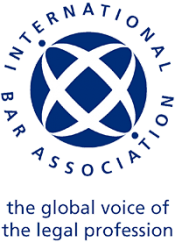
Steven Kay QC of 9 Bedford Row is chairing a session at the IBA Annual Conference in Sydney, Australia titled “Extrajudicial Killings” on Monday 9 October 2017 for the IBA War Crimes Committee. This session will include expert evidence from the UN special Rapporteur, ICRC and International Prosecution counsel Alison Cole (ex-ICTY, ICTR and UN SR) and examine the state policy issue behind such killings in the context of crimes against humanity.
From the Office of the High Commissioner for Human Rights:
GENEVA (24 May 2017) – Updated guidelines for investigating unlawful killings around the world have been launched in Geneva by the Office of the UN High Commissioner for Human Rights.
The guidelines – known as the Minnesota Protocol – make clear that investigations must be prompt, effective and thorough, as well as independent, impartial and transparent.
The Protocol is aimed at police officers, medical practitioners, lawyers, judicial officers, NGOs and others involved in investigations into killings which may be unlawful. It applies primarily to investigations undertaken during times of peace, but also covers killings during conflict.
“Proper investigations into suspicious deaths are an integral part of the protection of the right to life,” said the UN High Commissioner Zeid Ra’ad Al Hussein stressing the guidelines’ significance.
“Investigations are the key to accountability. But all too often lives are taken with impunity because proper investigations have not been done; whether they are individual people found dead in the gutter, or an entire section of the community subject to summary executions,” he noted.
“The revised Protocol will be an indispensable tool in ensuring effective and fair trials and other forms of accountability,” the High Commissioner added.
The UN Special Rapporteur on extrajudicial, summary or arbitrary executions, Agnes Callamard, hailed the Protocol as “an invaluable tool that will help guide investigations into suspicious deaths, ensure accountability for violations of the right to life, and bring truth, justice and reparation to the families of victims.”
Ms. Callamard called on police, as well as forensic and judicial officials around the world to implement the guidelines. “The task now is to ensure that there is acceptance and compliance; my mandate stands ready to assist with training and other technical support,” she said.
The Protocol stipulates that investigations should pursue all legitimate lines of inquiry into potentially unlawful deaths; officials should also seek to determine the cause, manner, place and time of death, and the circumstances.
The guidelines also make clear that investigations of police killings must be free from any undue influence that might arise from institutional chains of command; and that they must be free from interference from political parties or powerful social groups. However, it is emphasized that the preservation of life is paramount at all times.
The original Minnesota Protocol, also known as the UN manual on the effective prevention and investigation of extra-legal arbitrary and summary executions, was launched by the UN in 1991.
Its revision was carried out under the mandate of former UN Special Rapporteur Christof Heyns, who coordinated a global working group of legal and technical experts. Mr. Heyns said the old Protocol had been the “gold standard” around the world, particularly in the field of forensics, but that it had become outdated because of technological advances in areas such as DNA testing and digital photography.
The new guidelines establish detailed procedures for crime-scene investigations, interviews of suspects and witnesses, the excavation of graves, post-mortem examinations, and the analysis of skeletal remains.
They also stipulate that investigations should distinguish between natural deaths, accidental deaths, suicide and homicide.
Mr. Heyns said: “More than 70 experts from all fields and parts of the world have worked on the revised Protocol as drafters and advisors, making it possible to produce a document which should set the standard for years to come.”
To read the Minnesota Protocol, click the following attachment:
The Minnesota Protocol on the Investigation of Potentially Unlawful Death (2016)
Click below to learn more about the Minnesota Protocol:
Image source: www.martindale.com
